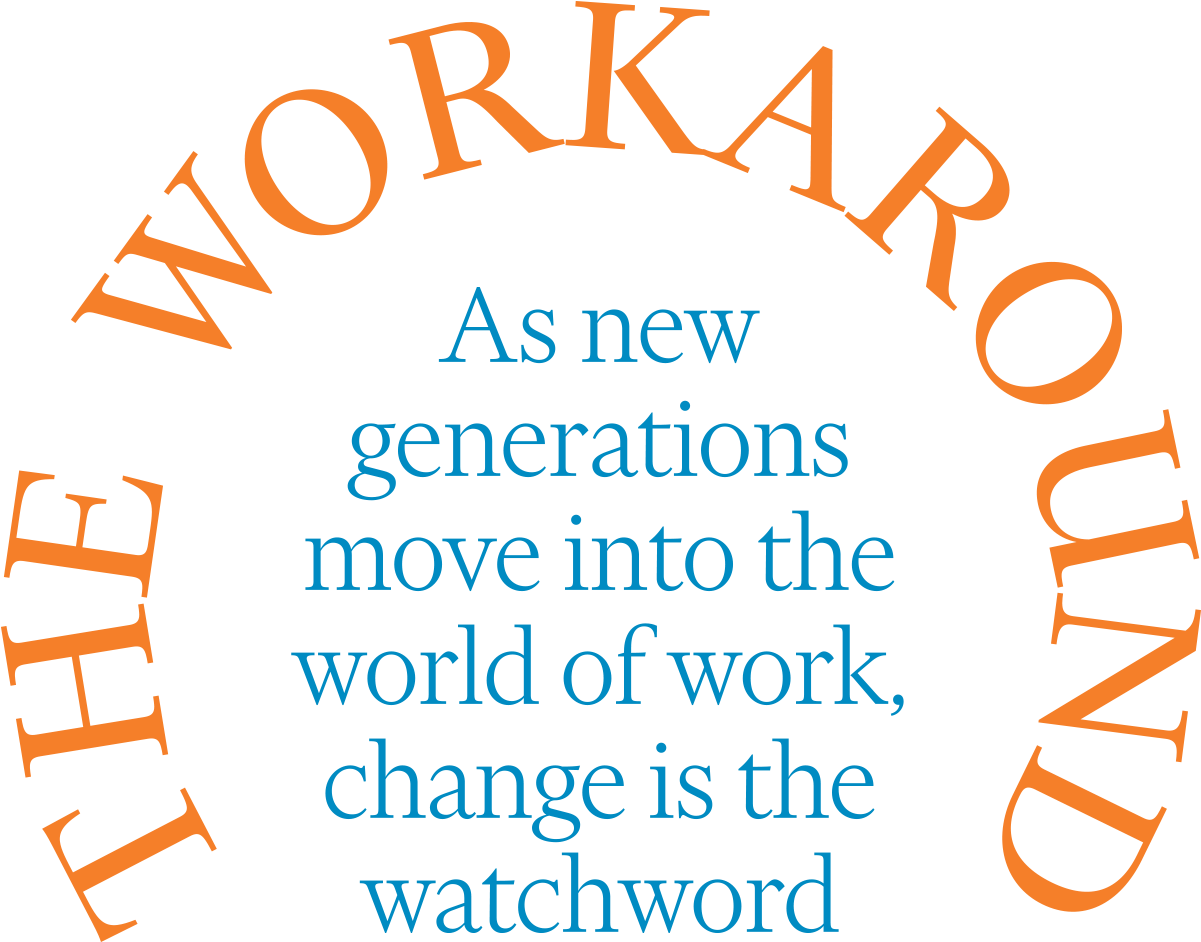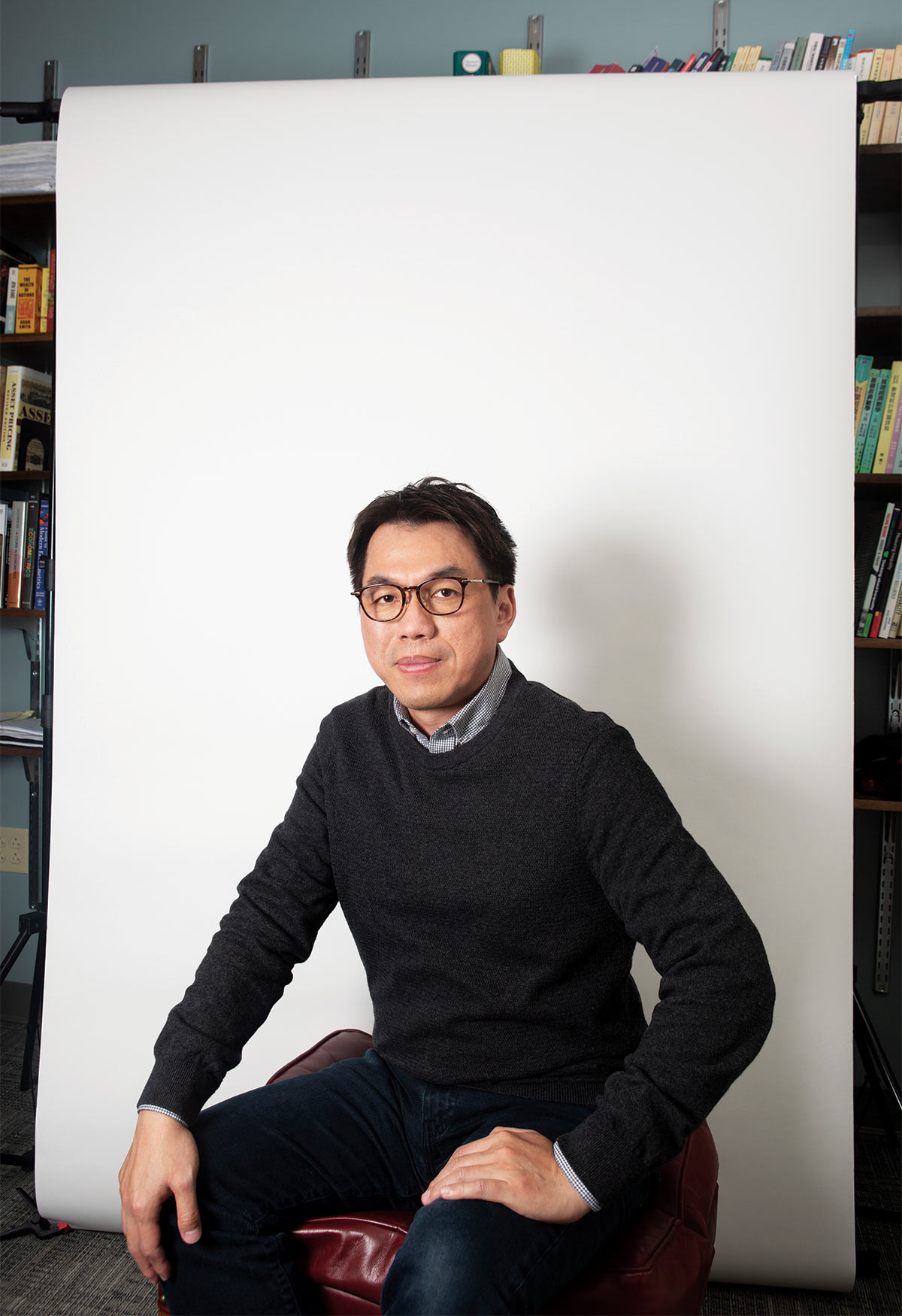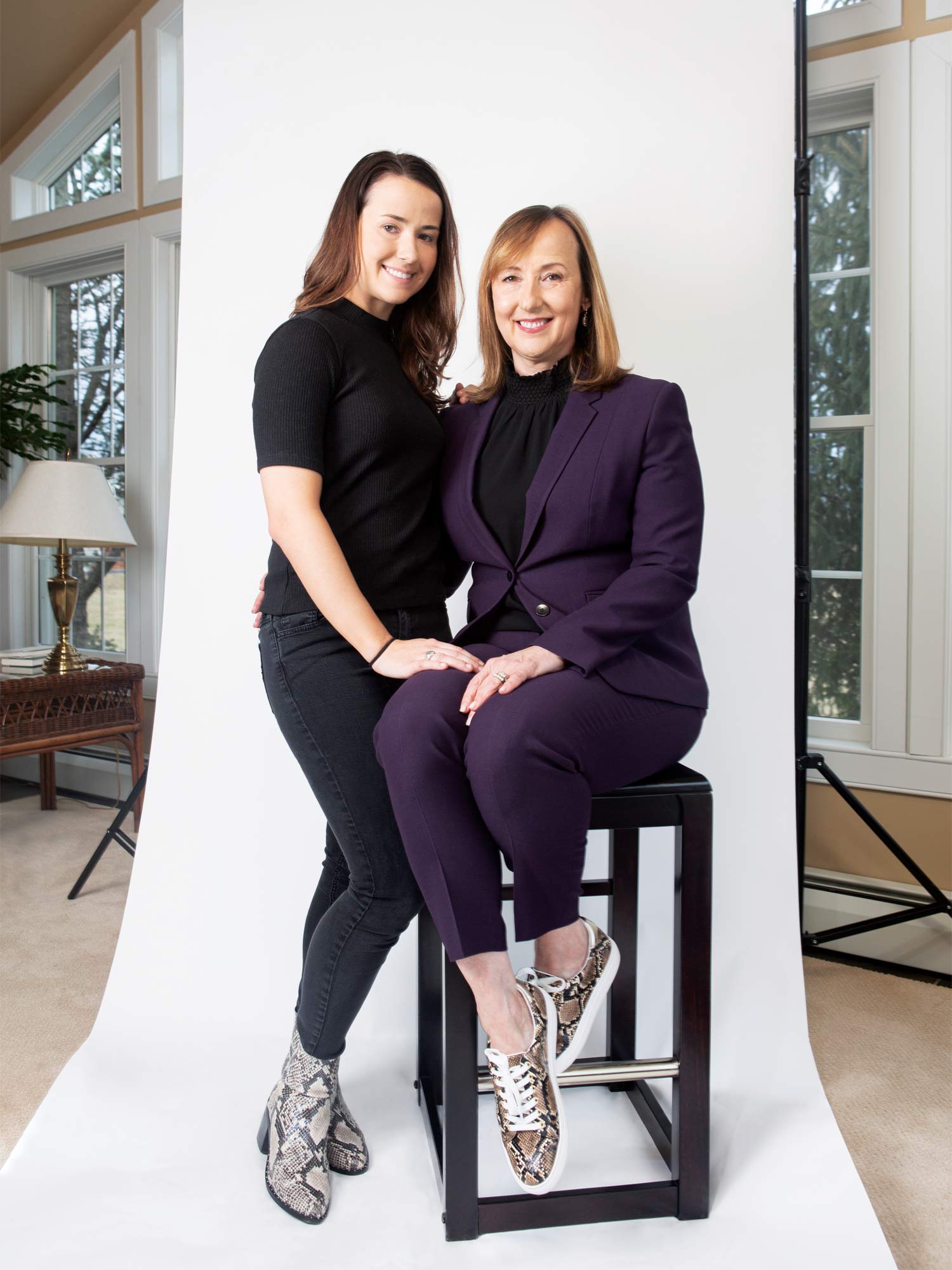
photographs by Dustin Fenstermacher
ere’s what the generation gap might look like in today’s office: A boomer-generation boss thinks, “Geez, why can’t these kids get into the office by 9 a.m.? What’s wrong with these slackers?” Meanwhile, those young “slackers” are thinking, “Man, my boss is a dinosaur. She expects me to be at the office by 9 a.m. sharp, even after I’ve been up ’til midnight working from home. She doesn’t have a clue.”
This clash of generational expectations is playing out across the modern American workplace, and that’s exactly the terrain Cali Williams Yost ’87, P’20 helps major corporations learn to navigate as CEO of Flex Strategy Group.
Yost says tech-savvy younger workers “are coming into the workplace with a completely different sensibility about how, when and where it is possible to work, and that is colliding with the traditional work model.”
Smartphones, high-speed internet and a dizzying array of technological tools, such as Slack and Zoom, make it possible to do work anytime from almost anywhere, alone or with teams of co-workers. Some younger employees have little enthusiasm for the traditional 9-to-5 model, which dates to a time when masses of workers toiled on assembly lines, and military-style hierarchy was the workplace norm.
Psychology major Effiem Obasi ’20 is one of those young workers. After graduation, she wants a job in community health with the flexibility that will allow her to continue her current remote work as an insurance broker helping clients with insurance and retirement plans.
“I want a job with some kind of flexibility,” Obasi says — ideally, a position in which she would meet people, isn’t stuck in an office all day and serves a valuable mission for a creative and innovative employer.
While gaining new workers like Obasi, employers are also losing baby boomers when they retire. Yost says, “Employers need a way to keep them connected” so the organization doesn’t lose the experience, trust and history they have helped build.
Yost says the question is one of survival: “How can we allow greater flexibility in how people work and still get the job done well? Companies are either going to address it and change, or they will die because these young people will not continue to work for them.”
Boomers, Ng says, are the ones who made the rules and reaped the rewards of hard work. While some boomers have retired or been pushed out, many continue working because they derive satisfaction from continuing their careers, and, at least outside of the tech/startup world, they tend to be the bosses. To them, the younger generation of workers may seem like job-hoppers who expect instant rewards, show no loyalty and want the freedom to take time off during the workday.
Ng notes that by age 30, millennials have had an average of six job changes — that’s double the number the boomer generation reported at the same age. And Ng says millennials’ expectations can be unrealistic, as he saw in the seven years he worked at a multinational bank. Newly minted MBAs would come in expecting a promotion after six months, when it typically took two years just to master the job. “Millennials are plugged into work all the time,” Ng says. “They feel like they’re in the fast lane and therefore should make fast progress up the ladder.”
Having seen older workers laid off and shorted on pension benefits and health insurance after years of hard work, millennials might not be inclined to loyalty: “We get it — times have changed. We don’t expect loyalty from you, so don’t expect loyalty from us.” Their motto might be, “Work isn’t everything. I want to have a life.”
Corporate workplace strategist Yost told The New York Times last year, “When younger workers talk about balance, what they are saying is, ‘I will work hard for you, but I also need a life.’ Unfortunately, what leaders hear is, ‘I want to work less.’ ”
Ng says work-life balance is a huge issue for him and fellow Gen Xers. They are the sandwich generation — many still have kids at home when they start caring for their aging parents. Ng turned down a job offer in Australia because he’d be a 24-hour plane flight from his parents in Vancouver B.C. Facing family stress and often finding their career paths frustrated or disrupted, Gen Xers report the least satisfaction with their life in general and work in particular, Ng says.
Gen Xers aren’t alone in expecting to neatly fit work and life together. Emma Yost ’20, daughter of Cali Yost, says, “Most in my generation want flexibility — it’s not just women who want families or who have to care for parents. Men are pushing for flexibility, too.”
A biology major, Emma Yost plans to attend medical school and hopes for a more humane environment than in the old days, when interns and residents essentially lived in the hospital. She’s encouraged by programs like Harvard’s medical residency, in which “they really focus on educating you, not just as a doctor, but as a person,” she says.
As Gen Z’s presence in the workforce grows, Ng expects even bigger changes to come: “Technology is part of their lives from early on. They are constantly connected. Information is always available. They can solve problems a lot faster.” But Ng notes that Gen Zers experience so much of their lives through communication devices that they lack social skills for negotiation and conflict management.
Emma Halper ’17 works at a global health nonprofit in Washington, D.C., where her colleagues range in age from 23 to 50. She says the generations seem to mesh well. “I feel like I’m constantly learning from people,” she says. In turn, Halper can offer fresh perspectives to older co-workers.
“My workplace has really good work-life balance,” Halper says. “I think they know that when they give us personal time off, we are much more focused and driven during the time we do have on the job.”
Halper says she has her “dream job” — it’s mission-driven and fits perfectly with her international relations degree. But like many of her generation, she doesn’t expect to stay in one job for life — she’ll need a graduate degree to advance in her field, and she wants varied work experiences. “I really value the opportunity to get different experiences and jump around,” she says.
“Employers are wildly underutilizing technology” that can help assess performance, she says. Yost gives the example of managers in a major organization’s legal department who began tracking performance with an online case-management system. Whether lawyers worked from the office or from remote sites, managers could easily track who was doing what. And surprise: Yost says managers discovered “a lot can slide under the radar even when people are showing up at work every day.” (Yost does caution that the performance measurements that are imposed and intensely tracked in places like call centers and fulfillment warehouses can become oppressively rigid.)
Regardless of the age mix or location of their workers, Professor Neil Boyd, management, says it’s vitally important for employers to create a shared sense of community. Not only does it help employees’ psychological well-being, but Boyd says it tends to drive deeper engagement. “I’ve definitely noticed from being around millennials and other younger people that this idea of having a sense of belonging seems to resonate very heavily with them,” he says. “In fact, it seems to resonate with just about everybody.”

Professor Carl Lin, economics, notes that the foreign- born segment of the U.S. population more than tripled in 40 years to 15% — amounting to some 48 million people. To succeed in this rapidly changing landscape, Cali Yost says, “Employers have to have a diverse and inclusive workplace.” And young people are on board with that. As Obasi says, “I expect wherever I work there will be people from different ethnicities, different backgrounds, different life experiences.”
Lin has found that employers who include high-skilled immigrants in their workforce are rewarded with higher profits. “Research has shown that if you encourage a cross-cultural or multicultural workplace, it helps facilitate the exchange of ideas that drives innovation and growth in the knowledge-based economy,” he says. “It’s healthy and good for the company and also for the country.”

A more diverse workforce will also expect to see diversity in leadership positions — without it, job performance, recruitment and retention can suffer. Yost says leaders have to develop more diverse upper management by going outside their comfort zone, expanding their recruitment pool and changing how they develop talent.
Ng emphasizes that today’s sweeping changes in the workplace are most profound in knowledge industries. A more traditional model persists in fields like manufacturing and construction.
After graduation, Alex Vogt ’16 took a summer job working the line at a window manufacturer but quickly worked his way up to supervisor and stayed for two-and-a-half years. Most of his employees were on work release from the correctional system, so he didn’t hear a lot of talk about work-life balance.
Now Vogt is in graduate school studying speech language pathology, which is still a traditional 9-to-5 field because working with clients in person is fundamental to the job. But the coming artificial intelligence revolution promises that machines and robots will do most everything we humans do, even today’s high-skill jobs requiring emotional intelligence. Should that happen, today’s workplace changes may look like the first, faint ripples before an ocean of upheaval.